Ryan Hall's Blog, page 251
May 27, 2016
Friday Funny: Treadmill Fails
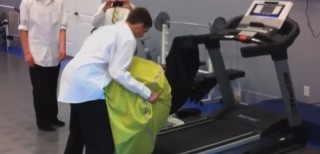
To lighten up your day, here are a few treadmill fails courtesy of America’s Funniest Home Videos.
The post Friday Funny: Treadmill Fails appeared first on Competitor.com.
Mike Ehredt Continues Mission to Run for Fallen American Soldiers
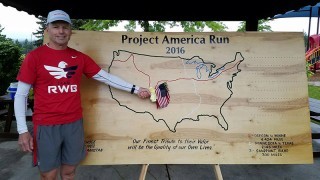
Photo: Peggy Gaudet
For those left behind, especially when it comes to the families and friends of fallen soldiers, determining how to honor and express gratitude for those who didn’t make it home is difficult. Five years ago Mike Ehredt, a U.S. Army veteran and retired postal clerk, launched Project America Run as a way to do just that by doing something he loves—running.
A certified personal trainer and running coach with an impressive endurance racing resumé, including two Eco-Challenge and Marathon des Sables finishes, and three times kissing the rock at the Hardrock 100 in Silverton, Colo., Ehredt kicked off his remembrance effort with Project America Run Iraq in 2010.
Starting on the shores of the Pacific Ocean in Oregon, the soft-spoken runner covered 4,424 miles across the U.S., before finishing at the edge of the Atlantic in Maine. He ran self-supported, covering more than a marathon worth of miles a day, pushing a jogging stroller with his gear and flags to honor the fallen. For his concept of One Life-One Flag-One Mile, Ehredt stopped every mile along the route to place an American flag tied with a yellow ribbon and inscribed with the name of a soldier who died in Iraq.
In 2012, Ehredt continued with Project America Run II in remembrance of U.S. soldiers who lost their lives in Afghanistan. He traveled 2,146 miles from the northern border of Minnesota, to just outside of Galveston, Texas. Between the two journeys Ehredt ran 6,570 miles over 223 days, averaging more than 29 miles per day, and taking a total of four rest days.
The 55-year-old Ehredt began Project America Run III this past Tuesday in his hometown of Sandpoint, Idaho. Since completing his initial projects, 70 more service men and women have lost their lives in Iraq and 230 in Afghanistan. The veteran plans to cover approximately 50 miles per day, placing a flag in a peg board every mile, for six days, finishing on Memorial Day. Instead of choosing a point-to-point route, Ehredt opted to stay in Sandpoint and is running a 1.05-mile loop in Travers Park. Not only is it safer than dealing with highway traffic (“in case the third time wasn’t a charm”), he can sleep in his own bed and has plenty of support and running company, including local school children.
“This isn’t about how far some guy named Mike can run. It’s about being a good person and doing something for someone you’ve never met, about being more than you are,” he says. “It’s an important message to share with kids.”
Ehredt will complete his final lap of Project America Run III, in honor of Air Force Captain David Lyon from Sandpoint, Idaho, at 10 a.m. on Monday, May 30.
When Competitor caught up withEhredt by phone, he was on mile 135 and “feeling pretty good, all things considered.” He’s running from 6 a.m. to 6 p.m. daily, with a brief midday break. He’s also changing directions with each lap.
“I’ve had people with me 95 percent of the time,” says Ehredt, who was excited to interact with the Sandpoint community during his run. “This is my personal remembrance, but, for all of us, the best way to remember is not to forget, and the connections made on these runs help to accomplish that.”
He trained much like he does for any ultra, with smart miles, plenty of time on the trail and dedicated mental preparation.
“Once I begin to taper, it’s time to wrap my head around the challenge,” Ehredt says. “Mentally, I have to put myself in that place where I’ve been before. It’s almost like a switch flips and then I’m ready to go.”
For his run, Ehredt is alternating between a pair of Hoka One One Bondi he wore during the last week of Project America Run II (he dug them out for old-time’s sake) in 2012 and a pair of Brooks Ghost 6. In addition to fueling with V-Fuel and Tailwind Nutrition, he is eating all the junk food he wants.
To view every flag placed by Project America Run, use the Find a Flag function on the Project America Run website.
The post Mike Ehredt Continues Mission to Run for Fallen American Soldiers appeared first on Competitor.com.
Shoe of the Week: Newton Fate II
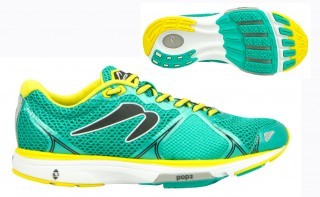
The Newton Fate II has a new upper that's more accommodating to toe splay and wider feet.
Light and responsive, yet well-cushioned, the newest version of Newton’s Fate is a nice update to last year’s well-received original model. The Fate II provides a balanced fit from back to front with a snug heel cinch and secure wrap around the midfoot. It has a generous but not overly wide toe box, and soft overlays around the forefoot allow your foot to move without restriction and help accommodate a number of different foot types. Newton’s characteristic forefoot propulsion lugs, while visually prominent, maintain a subtle profile when they spring into action, encouraging forward energy without feeling particularly invasive or awkward. (The five-lug “P.O.P. 2” array is beveled at the front, allowing smoother transitions as the foot leaves the ground to start a new stride.) The latest edition of the Fate provides more underfoot pop, which makes it ideal for faster tempo runs and longer races without sacrificing cushioning and protection. It also has a new breathable upper with stretchy panels to accommodate toe splay and give the first and five metatarsals more wiggle room. Neutral, more efficient runners will enjoy it as an everyday trainer best suited for running on the roads.
This is the shoe for you if … you’re looking for an energetic everyday high-mileage trainer that’s accommodating to wider feet.
Price: $135
Weights: 9.4 oz. (men’s size 9); 7.9 oz. (women’s size 7)
Heel-Toe Offsets: 4.5mm
Info: NewtonRunning.com
RELATED: Shoe of the Week—New Balance Fresh Foam Zante 2
The post Shoe of the Week: Newton Fate II appeared first on Competitor.com.
May 26, 2016
Olympic Dreams Unfold on and off the Silver Screen for Alexi Pappas
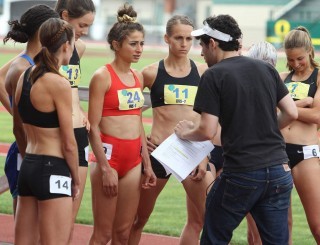
“Tracktown” film set for initial showings on June 4 in Los Angeles and July 5 in Eugene, Ore.
Alexi Pappas is either crazy ambitious or a visionary. Or maybe both.
For the past two years, the 26-year-old professional distance runner from Eugene, Ore., has been working on a feature-length film about a young woman much like herself who is trying to qualify for the Olympics. All the while, she had been training like a fiend and trying to improve her own running with hopes of punching her ticket to Rio de Janeiro this summer.
Now it’s all coming to fruition in splendid fashion. Editing of the 90-minute movie, called “Tracktown,” wrapped up in early May and will debut on June 4 at the L.A. Film Festival in Los Angeles. A second showing has just been announced on July 5 in Eugene, Ore., during a break in the action at the U.S. Olympic Trials track meet. (Tickets are $10 and go on sale on May 26 at TicketsWest, University of Oregon EMU and Eugene-are Safeway stores.)
In the meantime, Pappas found an opportunity to represent Greece in this summer’s Olympics—she has U.S./Greece dual citizenship—but she had to first achieve the Olympic qualifying standard in the 10,000-meter run. She did that on May 1 at the Payton Jordan Invitational at Stanford, running to a new personal best of 31:46.85 for the 25-lap race on the track, earning her the chance to compete in the Rio Olympics in August.
“I’m so excited to have this amazing opportunity to run in the Olympics for Greece,” she said after earning the qualifying standard. “It’s a dream come true.”
Pappas co-wrote and co-directed the movie with her partner, Jeremy Teicher, who has earned acclaim for two previous indepedent films. Pappas also plays the lead role of a fictional 21-year-old track star named Plumb Marigold, who is training at Hayward Field in Eugene in her quest to make the Olympics.
Andy Buckley (The Office, Jurassic World) and Rachel Dratch (Saturday Night Live) play supporting roles, while several top-tier American runners (including Nick Symmonds and Matthew Centrowitz) make key cameos. Pappas, who trains with the Nike-backed Oregon Track Club Elite program in Eugene, started her college career at Dartmouth College, but then transferred to Oregon in 2012. She will become the first woman ever to represent Greece in the 10,000-meter run in the Olympics. (The event only became available to women in 1992.)
After finishing her collegiate running career with Oregon in 2013, Pappas signed on to run professionally with the OTC Elite. After developing the story and writing the script in late 2013 and early 2014, they did a lot of the filming in 2014 and finished up in early 2015.
“I don’t know if we’ll ever take the deepest of breaths to relax, but with every phase of pursuing the Olympics and making a film, the next phase is always a welcome thing because it means things are going well,” Pappas says. “We’re certainly busy, but it’s work that we want to be doing so now we get to pursue it to the fullest.”
“After we finished the film and nailed down the debut, we had to move on to the next phases to get ready for that,” Pappas says. “Now, having qualified for the Olympics, it’s a huge relief and a huge privilege but it’s a huge gift too. Now it’s time to get ready and be able to show up in Rio as prepared as possible.”
As for representing Greece in the Olympics, Pappas will race in the 10,000 on Aug. 12 in Rio de Janeiro. She’ll be flying to Greece after the premiere of the film in Los Angeles to meet some of her Greek teammates in person. Her grandmother was born in Greece and now lives in Maryland, but she still has many family members living in Greece.
“On a personal note, it really makes my Greek family very proud,” she says. “And it’s been really exciting to see the support from Greece after I earned the qualifying time. There is an electric energy I can feel from overseas.”
When did the idea of making a running film in Eugene first come up?
Teicher: “It’s hard to pinpoint an exact date, but there was a window of time we decided to make this movie was in the summer of 2012 after Alexi ran the Olympic Trials. That was a seed planted in our minds. ‘Oh, it would be fun to make a movie here one day.’ Then it became more serious when Alexi finished running for Oregon in 2013. I was finishing up work on our first film, “Tall as the Baobab Tree” and was traveling to film festivals and Alexi had just signed on to run with OTC Elite. She had really fallen in love with the town and I said, ‘OK, I’m going to move to Eugene’ and harness our energy to make our next film. It was a long process, but when you’re working in a reality situation where you’re working around elite athlete schedules, you have to factor that into the timeline of the project. Things didn’t happen exactly the way we expected them to, but that’s kind of what happens when you’re making an indy film. But you embrace that and that’s part of the joy of it.”
How autobiographical is the story? How much does the main character, Plumb Marigold, compare with your own story?
Pappas: “The story is inspired by my real-life experiences and observations of professional runners pursuing this Olympic dream, but it’s not directly about one individual story or person, myself included. We like to sort of think of it as a patchwork quilt of personalities and occurrences woven together to capture the emotional core of this pursuit.”
Was there ever a concern about making a film about competitive running?
Teicher: “When I first met Alexi, I didn’t even know she was a runner and didn’t know much about that part of her life for the first couple of months we were dating. I was an athlete in high school, but I wasn’t into sports in college, mostly theatre and film. But with indy films, you want film that only you can make. When you have your creative partner who is also training for the Olympics and living in a place like TrackTown USA and has friends who are training and you have access to an amazing track and underwater treadmills, as a filmmaker, you’re like, ‘oh, yeah, this is awesome.’ So it really made sense for us to do this. The emotional core of the story is about a person who is growing up and really dedicated to pursuing this goal but she’s not sure if it’s really what makes her happy or not and she has to figure that out before it’s too late. As an indy filmmaker, I can relate to that because we’re pursuing a crazy goal at the sacrifice of a normal career and you question that sometimes. But now I always kind of smile when I find myself at a track race after how it has all happened.”
How concerned were you with maintaining an authentic portrayal of elite running in the film?
Pappas: “One of the best moments was that the first athlete who read the script was Nick Symmonds, and I was nervous. Prior to that we had shared the script with our advisors in a competitive lab program through the Sundance Film Festival, but we hadn’t shared it with any athletes. We had Nick read it because we were asking him to come onboard as actor. He said he could identify with the main character Plumb and her pursuit of the Olympic dream while trying to balance that and be a normal person. That’s when I knew we were on the right path because I knew we were making a good film that will be entertaining as an indy film but it will also speak to my peers in the running world.”
Was it challenging to maintain your training while also working on the film?
Pappas: “We worked around my training. We strategically had the principle photography timed during my month off of running. I knew that I wouldn’t be able to be a fully committed athlete if I was trying to direct and act and nor would I be a great director or actress if I was trying to train at the same time. It was a very thoughtfully planned production schedule. I was very intentional about making sure my running and my filmmaking stood on their own, individual platforms. I really chose to pursue professional running because I wanted to be a quality athlete on the world stage independent of anything else. And the same with filmmaking—I want to be a world-class filmmaker and want to keep doing that for years and years after I’m done running. What has wonderfully happened is that they’ve both blossomed into these really positive and successful things in my life that have positive feedback looped to each other. It’s so fun to come back from practice after having a great workout and feel really energized to work on the film. Or sometimes I’ll have a so-so day of running and be rejuvenated by working on the film. So there’s a sense of balance there and I feel like I’m healthier as a runner, mentally and physically, because of it. Our film advisors have been so supportive and excited about my running and my coach, Ian Dobson, and (TrackTown USA president) Vin Lananna and everyone in Eugene has been so interested and supportive of the film. You really feel like one aspect is excited by the other and that really elevates both.”
What were some of the other challenges of making the film?
Pappas: I think there are uncertainties almost every day in independent filmmaking. Every phase of the project had its own goals and things we needed to tackle every single day. In the writing phases, there are challenges that are more creative. But then bringing in collaborators, finding actors, getting funding are things that are thing that are both in your control but also out of your control. We are so grateful to have such an incredible team—from our local collaborators in Eugene to people like John Legere of T-Mobile, who’s one of our executive producers and biggest investors—and it was because of all of them we were able to bring our story to life. It didn’t unfold as I would imagined it would, but I think it unfolded in a better way because of all of the relationships and experiences we had were new. Jeremy and I really learned a lot by doing and we met a lot of people and grew quite a bit as creative people and as filmmakers.”
The post Olympic Dreams Unfold on and off the Silver Screen for Alexi Pappas appeared first on Competitor.com.
Kara Goucher Won’t Run U.S. Olympic Trials, Focusing on Fall Marathon
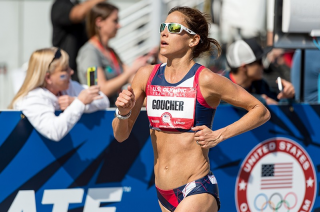
Kara Goucher placed fourth at the 2016 U.S. Olympic Trials in Los Angeles, finishing in 2:30:24 and just missing a U.S. Olympic berth. Photo: Matt Trappe
Soon after the disappointment of missing out on qualifying for her third U.S. Olympic team by finishing an oh-so-close fourth place at the Feb. 13 U.S. Olympic Trials Marathon in Los Angeles, Kara Goucher’s thoughts turned back to the track.
Yes, she said afterwards, “I’ll be trying to make it in the 10,000.”
After returning to her Boulder home, with husband Adam and son Colt, Goucher took a break and then resumed training under her coaches, Mark Wetmore and Heather Burroughs. Her training partners include Olympic track athletes Jenny Simpson, Emma Coburn and Shalaya Kipp as well as 1500m runner Sara Sutherland.
Making the 10,000 meter team was a realistic goal. Goucher has run as fast as 30:55.1 for the distance, earned the bronze medal at the 2007 IAAF Osaka World Championships, and remains as determined as tough a racer and trainer as ever. She needed run a a qualifying time of 32:25 or faster to qualify for the Trials.
However, on Thursday, Goucher told Competitor that she is no longer trying for the July 2 U.S. Olympic Trials 10,000-meter finals in Eugene, Ore., in order to focus on her marathon training.
“There was time to qualify (the cutoff is June 26), but I just felt like I was pushing too hard,” she wrote in an email. “After the marathon I felt great, but a month later I started to feel like I wasn’t recovering as well as I had hoped.
“It is very disappointing for sure,” added Goucher, “but I enjoyed training for L.A. so much that I am really excited to do another marathon.”
That marathon will come this fall. Goucher did not mention a specific race, but speculation is that she could run the Sept. 25 Berlin Marathon for the first time. Or return to the Nov. 6 New York City Marathon, where she placed third in her debut in 2008, and where under difficult conditions she finished in 2:37:03 in 2014, after running with the leaders early on.
Goucher’s personal best is 2:25:53, from that marathon debut, just months after placing 10th in the 10,000 meters at the 2008 Beijing Olympic Games. (Goucher also placed 11th in the 2012 London Olympic marathon).
“My goal now is to build up over the summer for a fall marathon,” Goucher said. “In better conditions, I think I can scare my PR. I’m really looking forward to it.”
The post Kara Goucher Won’t Run U.S. Olympic Trials, Focusing on Fall Marathon appeared first on Competitor.com.
At 52, Colleen De Reuck Prepares for Grueling Comrades Marathon
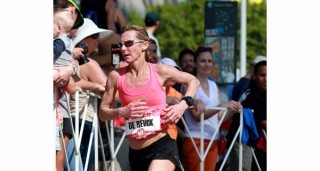
Photo: PhotoRun.net
(c) 2016 Race Results Weekly, all rights reserved. Used with permission.
The Comrades Marathon is no stranger to Colleen De Reuck. The U.S. distance star grew up in a “Comrades house” – father Frank Lindeque ran it 15 times and brother Colin earned a top-10 spot in 1995—and she spent most years along the route to support them. She grew up close to the Comrades route in South Africa’s KwaZulu-Natal province.
On Sunday she will be on the route again, but this time she will not be watching. The 52-year old from Boulder, Colo., will be running.
The 91st Comrades Marathon from Pietermaritzburg to Durban, a “down” run this year over 89.208 km (about 55.4 miles), will be De Reuck’s second ultramarathon after she had finished fifth in the Old Mutual Two Oceans Marathon over the Easter weekend.
De Reuck is one of the best female distance runners ever produced in South Africa and still holds the national marathon record with the 2:26:35 run in Berlin in 1996. She won 10 South African titles on the road—among these the half-marathon crown four years in a row, 1986-89, with a national record of 1:08:38 in 1989—as well as two in the 10,000m on the track and one in cross-country.
Her rivalry with Elana Meyer was one of the greatest in the history of the sport. On the South African all-time lists they own the top 35 times in the 10K (and 45 of the top 50), the top 21 times in the half-marathon (and 37 of the top 50) and the top nine times in the marathon (and 20 of the top 30). De Reuck represented South Africa in all three disciplines of athletics: in the Olympic Games Marathon (1992 & 2000), World Half-Marathon (1992 & 1995), World XC Championships (1993 & 1996), Olympic 10,000m (1996) and World Championships 10,000m (1997). She became a U.S. citizen in December 2000 and, at the age of 40, represented her new country in the 2004 Olympic Marathon. She was SA Female Athlete of the Year in 1997.
She also holds the SA record for 20K (1:05:11, a world best at the time) and has the fastest time for 25K (1:27:26 on an aided course). Among her other PBs are 31:16a for 10 km, 48:19 for 15 km and 31:56.00 for 10,000m on the track.
None of these will count for much on Sunday, and she knows it.
De Reuck, also a top triathlete, has tremendous respect for the Comrades distance, she said last week, but she is going to run hard. “I am very excited,” De Reuck told Media24. “The Comrades is a dream come true. For the Two Oceans I got by with a normal marathon training program, but that is not possible for the Comrades. I knew that I had to include four-hour sessions in my program.”
Her legs were sore after the Two Oceans, her first ultra, and then she also fell ill and could not train for two weeks—but she now believes this was a blessing in disguise, because it allowed her body to recover fully before she started her Comrades training.
In the Two Oceans, 19 days before her 52nd birthday, she set a new world age best of 3:27:38 at 50 km (more than 14 minutes better than the previous mark) and demolished the course record in the 50-59 age category with her 3:53:07. The average age of the four runners ahead of her was 35.
In the Comrades she will face two of that quartet again: winner Caroline Wöstmann, who will defend her Comrades title, and Charné Bosman, who was fourth (and second in last year’s “up” Comrades).
“I have been extending my training distances steadily,” De Reuck continued, “and I am satisfied that I have done enough.”
She acknowledged that the Comrades is different from everything else she has done so far in her career. “You have to have respect for the race and the distance. I don’t really know what to expect. I would like to run at a pace of about 4½ minutes a kilometer so that I have something left in the legs for the last 20K if I have to push.”
Ellie Greenwood, the British winner of the last down run, has withdrawn because of an injury. However, apart from Wöstmann and Bosman, quite a few formidable rivals remain for De Reuck, who earlier this year finished 67th in the U.S. Olympic Marathon Trials in 2:49:57—among them Julanie Basson, Salome Cooper, Yolande Maclean, Kerry-Ann Marshall and Simona Staicu. But it will certainly be no surprise if the former South African duplicates her top-five Two Oceans finish.
The post At 52, Colleen De Reuck Prepares for Grueling Comrades Marathon appeared first on Competitor.com.
New Made-in-Kenya Running Shoe Brand Launching via Kickstarter
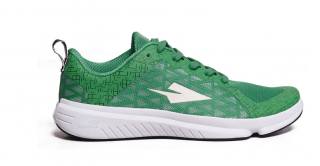
The soon-to-be-released Enda Iten weighs about 7.9 oz. for a men's size 9.0 and has 21mm/17mm heel/toe cushioning offset.
A new running shoe brand called Enda is hoping to generate enough funds through a Kickstarter campaign to be able to manufacture shoes in Kenya and ship its first models later this year.
The company, founded by Kenyan Navalayo (Nava) Osembo-Ombati and American Weldon Kennedy, got started in 2015 as a social change enterprise organized on the premise of sharing Kenyan running culture with runners around the world while also creating sustainable jobs and social benefits for Kenyan people, according to the brand’s Kickstarter post.
The company founders want to allow Kenyan communities to benefit from the international success and renowned culture of Kenyan running by having a percentage of its profits go toward projects aimed at providing greater access to things like clean water, sanitation healthcare and education. (The name Enda means “Go!” in Swahili.)
“We wouldn’t get into this if we weren’t driven by social mission,” Kennedy said via Skype from Nairobi on May 25. “Obviously, we can’t accomplish the social mission without creating a world-class product and we wouldn’t be true to our brand if we weren’t creating a world-class product, so that has got to come first. If you want to communicate with runners and want to bring financial benefits to a place, then the running shoe it is. So that’s what we’ve set out to do.”
Enda’s first shoe model, the Iten, is named after the iconic distance running town in the Rift Valley. It’s designed to be cushioned enough for high-mileage half-marathon and marathon training and sleek and light enough for racing from 5K to the half marathon (and the marathon, too, for strong, nimble runners).
Like many lightweight shoes in this category, it has a midsole made from a high-abrasion EVA compound and a blown rubber outsole. The Iten also has a sculpted midsole that will wrap part of the rear of the foot for a secure, snug fit. It has been designed with a 4mm heel-toe offset (21mm in the heel, 17mm in the forefoot) and weighs about 7.9 oz. for a men’s size 9.0.
The big deal about this shoe, of course, is that it will be the first one produced from Kenya on a commercial basis. Initially, most of the components of the shoe will be sourced and made in factories in China, then shipped to Kenya for final assembly, Osembo-Ombati says. “But in the long term, we hope to make the whole process, from start to finish, in Kenya,” she says.
The brand is hoping to embrace its Kenyan roots in many other ways, too. It will produce its first shoes in red, green and black to match the colors of the Kenyan flag—the brand’s logo resembles the tip of a spear, which is a symbolic icon of Kenyan culture—and the word “Harambee” is printed on the bottom of the shoe as a nod to the country’s “all pull together” national motto. Their prototypes were wear-tested by Kenyan runners, who provided critical feedback in the development phase.
“For us, the goal is making sure people can benefit from what we’re creating,” Osembo-Ombati says. “So far the support has been overwhelming. We had a passion for this and you think you have a good idea, but once it has gotten out there we realize it’s not just our passion. There are people all over the world who are interested in this, but up until now maybe there just wasn’t a way to express it.”
Enda is hoping to raise $60,000 in seed money through its Kickstarter campaign to take it through from the development phase to the production phase of its first generation of shoes. As of May 27, about 48 hours into its campaign, it had raised about $45,000 from 380 backers.
“We set out to find a great group of people to help us get this started and when we approached them and said, ‘We want to make Kenyan running shoes,’ they said ‘that’s absolutely mad, but I’ll be happy to help,'” said Kennedy, 32, who grew up in New Mexico. “We’re now at a point where we’ve got a [prototype] shoe and a plan and we just need to put the money to it.”
Osembo-Ombati, 31, hails from a village near Eldoret, another one of Kenya’s top distance running towns. A graduate of the London School of Economics, she is trained as both an accountant and a lawyer and has worked in the U.S., UK, Ethiopia, Tanzania and Kenya.
Kennedy, who grew up in New Mexico, is a social-change campaigner who has worked on a range of early stage social change start-ups. He built the student and international member programs at The ONE Campaign and most recently led Change.org’s growth in Europe as the organization’s regional managing director. An avid runner and running shoe obsessive, Kennedy’s half marathon PR is 1:37:39.
Kennedy says he and Osembo-Ombati are fully aware of the challenges of entering an already crowded running shoe market, but they believe they’ll be offering something unique and different. He points to the success of relatively new brands like Newton, Hoka and Altra—which each came to market with an entirely new running shoe design—and also says Enda’s social mission will have a distinctive appeal.
Enda will take a portion of profits from every shoe sold and have its customers choose which projects that money will go toward.
“I think we have a unique opportunity to connect with people,” he says. “The ethical running game is a big thing. The experience of using running to accomplish social good is how a lot of people get into running. I think there is an opportunity in having products that speak to accomplishing social good in the running space. What we want to be able to do is connect this community of runners who will be running in Enda products to this amazing scene in Kenya and help people both see and participate in a way you just don’t get to do normally.”
Osembo-Ombati and Kennedy met at a social enterprise pitch banquet and later discussed ideas when the concept of making Kenyan running shoes came up.
Kennedy admits that there are numerous challenges to producing shoes in Kenya—not the least of which there are only limited industries and raw materials to support what they’re doing. They will try to source whatever materials they can in Kenya, but for starters that might just mean shoe laces and packaging.
However, he says the brand will benefit from the ability to ship shoes to the U.S. duty-free, thanks to the U.S. Congress renewing the African Growth and Opportunities Act a year ago.
Interested Kickstarter backers can pledge as few as $7 to as much as $6,000. If someone donates $6,000 to the effort, Enda will treat them to a two-week running vacation in Kenya.
“We were optimistic we could make running shoes because we knew we would have authenticity,” Osembo-Ombati says. “We don’t have the marketing budget of the big companies. We are small, but I think from a running perspective, our brand is really strong. It’s a niche market, but we are authentic.”
The post New Made-in-Kenya Running Shoe Brand Launching via Kickstarter appeared first on Competitor.com.
May 25, 2016
Out There: On a Hot Streak
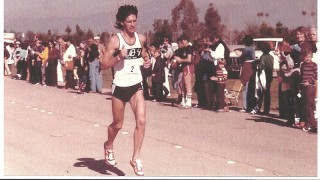
The years have passed but Jon Sutherland keeps running.
Could you run for 17,155 consecutive days? Jon Sutherland has.
My job writing for a running magazine requires copious amounts of…well, running. Which is great, because I love running.
And yet some days I just don’t feel like doing it. Take today, for example. Here I sit in my bathrobe, making excuses for why I shouldn’t tick off today’s workout: Last night’s episode of “Game of Thrones” gave me nightmares, and now I’m tired; it looks like it could rain any second; my dog is sleeping on my feet, and I dare not wake him up; either PMS or M&Ms have caused me to feel bit bloated, and I really, really, really shouldn’t go for a run…right? Right? Anyone backing me up here? No?
They’re all BS excuses, of course. Especially when you encounter people like Jon Sutherland, who holds the U.S. record for the longest run streak. As of today, the 65 year-old from West Hills, Calif., has ignored the excuses and run every single day for 17,155 days.
That’s 47 years, you guys.
That’s longer than I’ve been alive.
When I first heard of Sutherland’s run streak, I assumed he must be some sort of militaristic runner who rarely deviates from his routine. Quite the contrary: Sutherland is a writer who covers the rock music scene, which is about as far from militaristic as one can get. The hours are inconsistent, the deadlines pressing, and the travel demanding.
Sutherland runs anyway. Every day, without fail.
And now, if you’ll excuse me, I’ve got to put on some pants and go for a run.
Q&A With Jon Sutherland U.S. Run Streak Record Holder
How many days does your run streak have?
On May 26, 2016, it is 47 years.
What “rules” do you have for this streak?
Running at least one mile every day unassisted. I kept up a minimum of three miles a day for almost 40 years now I’m thankful for the one mile days! I’ve averaged 11 miles per day for over 193,000 miles during the streak.
Was this an intentional thing? Did you wake up one morning and say to yourself, “I think I’ll run every day for the next 40 some-odd years”?
No, never! A teammate of mine, Mark Covert at LA Valley College, mentioned that he had run every day for a year, so I thought, “I’ll try that.” I was always 307 days behind Mark until he stopped his streak.
Do you log things formally, or is it just a matter of running for running’s sake?
I’ve written down every workout I have ever done going back to 1968. I fill a 3-inch notebook every year with my lifetime mileage stats, running diary and mementos from that year.
I’ll be honest—there are days when I look at my training plan and I’m just not digging it. Do you have days like that, too?
I bet I hold the world record for this. I’ve gone to over 1,000 rock concerts which put a lot of morning runs in jeopardy.
So how do you get out the door on those days?
I have two dogs, Puck and Pixie, to remind me every day. In all, I run about 10 times a week—I can’t do doubles everyday anymore.
Do you ever just check off the required mile and go home?
Usually when I run a mile just to keep the streak alive I feel guilty and run more.
Yeah, that first mile usually leads to more for me, too. What about injuries or illness?
I’ve had 10 broken bones during the streak: four ribs, a shin, pelvis, vertebrae, radius, and a couple stress fractures in my feet. I don’t get sick much – mono in college and strep throat a couple of times.
Was your streak ever threatened?
I had an avulsion fracture, where muscle pulled off the bone, during a half-marathon in 1988. I felt a big pop slipping on ice going at 5:00 min/mile pace, and the runner next to me heard it! I finished the race! The next day I could barely lift my right leg off the ground. That injury took nine months to heal.
A lot of people make a big deal about rest days—obviously, with a streak, that doesn’t happen. How do you build in that recovery time?
My trick was to run early one day and late the next to get the most rest in between runs.
How in the world did you go for a run the day after a race, when most people are zombie-walking?
I always used running the day after a race to analyze my performance. If I ran poorly, I’d be determined to train harder. If I ran well, I’d be excited—You’re getting there, man!—and I’d run harder. Races motivated me to do the work I needed to be competitive.
Do you still race?
Not anymore. I think 615 races are enough.
Some people view running (and especially run streaks) as a selfish endeavor. Has your streak ever been a source of conflict with your loved ones?
My parents thought sports were noble, so no problem there. My family brags about me and I have fun with that. I tell people, “It’s not what I do, it’s who I am. I’m a runner, runners run.”
I’ve found that the more time I spend running, the more I experience the world—I see more cool/interesting/crazy things, encounter new people, and have experiences I otherwise wouldn’t have dreamed of. Have you had the same experience? What has running brought to your life?
People. I have met so many fascinating runners. I’ve run with some of the greatest runners of all time. I remember a run I took in New Zealand with Dick Quax, Dave Bedford, John Walker, Jos Hermans and Rod Dixon—all world record holders! Wow! Traveling all over the U.S., Europe and New Zealand to race has been fun too.
In all your days of running, does one stick out as the best you’ve ever had?
Any time I can run at the bottom of Huddart Park in Woodside, California, I’m incredibly happy.
What advice do you have for building a long and healthy run streak?
Run on soft surfaces with good shoes as much as you can! Keep races on your calendar that will motivate you to get out there when you don’t feel like it.
* * *
About The Author:
Susan Lacke does 5Ks, Ironman Triathlons and everything in between to justify her love for cupcakes (yes, she eats that many). Susan lives and trains in Salt Lake City, Utah with three animals: A labrador, a cattle dog, and a freakishly tall triathlete husband. She claims to be of sound mind, though this has yet to be substantiated by a medical expert. Follow her on Twitter: @SusanLacke
The post Out There: On a Hot Streak appeared first on Competitor.com.
Chicago to Offer Free Community Running Races This Summer

A collaboration between the City of Chicago, the Chicago Park District and the Chicago Area Runners Association came to fruition last weekend with the start of the ‘Go Run program—a free organized, timed 1-mile and 5K run held at three parks around the city.
The objective of ‘Go Run is to activate neighborhood parks and strengthen communities by encouraging an active lifestyle through running. Last Saturday was the first event, and events will take place each of the next seven Saturday mornings concurrently at Humboldt Park, Warren Park and Washington Park in Chicago. The 1-mile and 5K race courses are entirely within the parks.
RELATED: 5 Places to Run In…Chicago
“The first ‘Go Run was exactly what we hoped… organic, fun, free and diverse. We were pleased to see such great support from our running community. We had a large volunteer turnout with support from local high schools, running clubs, and community-minded individuals. ‘Go Runs are a long-term advocacy program for our communities and CARA is pleased to have the support of these organizations to make ‘Go Runs go in our neighborhoods and parks” said CARA’s Executive Director, Edward Zylka.
Participants and volunteers can sign-up online at CARAruns.org (choose ‘Go Run on the menu bar) or before the run each Saturday between 8:15 a.m. and 8:45 a.m. The runs are at 9 a.m. each Saturday.
“At CARA we often talk about the ‘power of the group’, and getting people running and volunteering together in their neighborhood parks is a perfect way to foster a greater sense of community, which is at the core of our mission as a non-profit,” CARA President Anne Baker said. “Looking ahead we plan to expand ‘Go Run to more Chicago Park District locations and throughout our entire Chicago area membership area.”
The post Chicago to Offer Free Community Running Races This Summer appeared first on Competitor.com.
Adidas Opening Shoe Factories Manned by Robots in Germany, U.S.

Adidas says it will open a U.S. factory to manufacture running shoes in 2017. Photo: Shutterstock
For decades, almost all running shoes produced in the world were made in factories in Southeast Asia. But adidas announced on May 24 that it plans to open new factories operated largely by robotic labor next year in Germany and the U.S.
The company’s German roots stretch back to the in the early 1920s, when German cobbler Adi Dassler started making athletic shoes out of his mother’s laundry room. His brother, Rudolf, joined the business, then called Dassler Brothers Shoe Factory, and they began making athletic shoes for competitors in the 1928 Olympics.
The adidas brand officially got started in 1949 (after Rudolf split off to start Puma) and it thrived as the world’s top athletic footwear manufacturer for decades. Eventually numerous competitors came on the scene, and then production eventually shifted to China and Vietnam. Adidas closed its last shoe factory in Germany in 1993.
RELATED: How New Balance Makes Running Shoes in America
But, according to a story by Reuters news service, advances in robotics and automation means that Adidas can now afford to bring production back closer to customers to meet demands for faster delivery of new styles and to counter rising wages in Asia and lengthy shipping times.
The company gave journalists a first look at its new “Speedfactory” in the southern German town of Ansbach on May 24, saying large-scale production will start in 2017 after producing the first 500 prototypes for sale later this year.
“With the Adidas ‘Speedfactory’, we are revolutionizing the industry,” said Adidas CEO Herbert Hainer. “Our consumers always want the latest and newest product–and they want it now.”
Hainer said Adidas hoped to open a similar plant in the United States next year and expects the two factories to produce at least a million pairs of shoes a year combined within the next couple of years.
“In the medium term, you will see our factories in all major markets,” he said.
MORE: Business of Fashion
The post Adidas Opening Shoe Factories Manned by Robots in Germany, U.S. appeared first on Competitor.com.
Ryan Hall's Blog
- Ryan Hall's profile
- 21 followers



